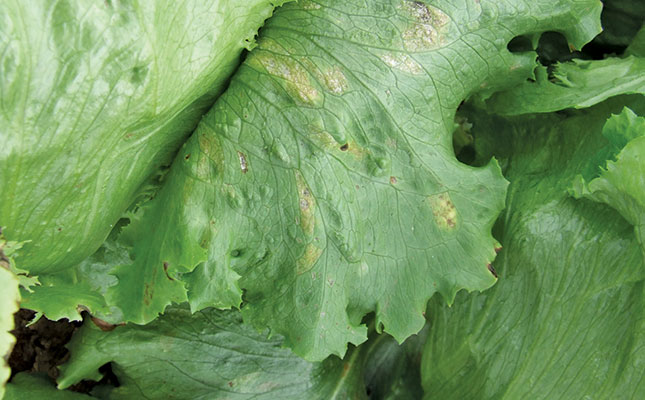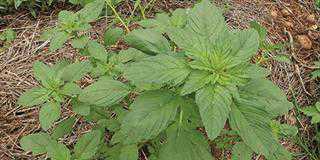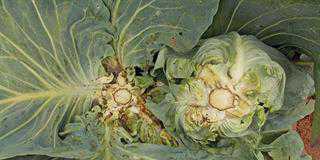
Photo: Bill Kerr
Books will describe many others, but they are of little or no consequence here.
Sclerotinia
This disease is easy to identify. When the plant is removed from the soil, a white cottony fungus will be seen on its underside. When the disease is advanced, dark, hard structures (sclerotia) are evident.
There are two species. The sclerotia of Sclerotinia minor resemble mouse droppings a few millimetres in length. Those of S. sclerotiorum are larger (up to 12mm) and more irregular in shape.
The sclerotia remain in the soil and produce small mushrooms during cool, wet weather. These release millions of spores which disperse and infect plants they land on. Crop chemicals are not particularly effective in controlling the fungus; your best course of action is to remove infected plants and bury or destroy them to prevent a future outbreak.
Downy mildew
Cool, moist weather favours this disease. The first symptoms are yellow areas on the upper side of the older leaves. If the leaves are turned over, you will see corresponding fuzzy mildew patches.
Downy mildew can be highly destructive if favourable conditions persist and no control measures are adopted. However, if the disease strikes when the plants are at an advanced stage of development, the lettuce can still be marketed, provided the infected leaves are removed. If the fungus attacks younger plants, it will reduce the head size and even eating quality.
If you are a seedling grower, be constantly on the alert for symptoms, as moisture levels in a nursery are usually favourable for the disease and only the temperature may prevent its development.
If you farm in a cool, moist area, you may have to adopt a preventative spraying programme. But most of the time you should be able to get away with spraying as soon as the first symptoms appear, as long as you catch the disease before too much damage is done.
Dithiocarbamates and copper sprays can be used as preventatives; however, ensure that there is proper coverage of all leaf surfaces. Because the fungus builds up resistance fairly rapidly, systemic products should be employed only in an emergency.
If you need to do a good deal of spraying, alternate systemic products with non-systemic products, and also alternate systemic products with other unrelated systemic products. Discuss this with your chemical rep. Resistant lettuce varieties become available from time to time, but the fungus can adapt itself to these varieties quite quickly, so this is not a workable solution.
Powdery mildew
Unlike downy mildew, this fungus develops in hot, dry conditions. The mildew will be visible on both the upper and lower leaf surfaces – a sure sign of powdery rather than downy mildew.
To confirm this, examine the mildew with a magnifying glass. Powdery mildew makes long chains reminiscent of strings of beads, whereas the downy mildew looks like miniature plants growing on the leaf surface. Various products are available to control powdery mildew.
Bill Kerr is a vegetable specialist and a breeder of a range of vegetables.













